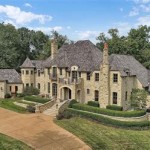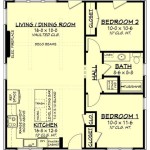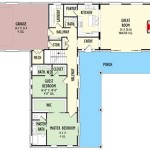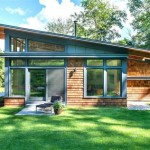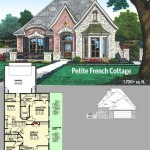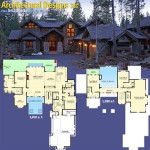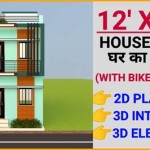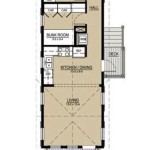Beach Bungalow House Plans Designs: A Comprehensive Guide
Beach bungalow house plans represent a unique architectural style specifically tailored for coastal living. These designs emphasize relaxation, connection with the surrounding environment, and resistance to the elements. Understanding the key features and considerations of these plans is crucial for anyone considering building or renovating a beachside home.
This article explores the defining characteristics of beach bungalow house plans, examining prevalent designs and their distinct attributes. It will also cover considerations for adapting these plans to specific site conditions and personal preferences, focusing on design aspects that optimize the appeal and practicality of a beachside residence.
Key Characteristics of Beach Bungalow Architecture
Several key characteristics define the beach bungalow style, influencing both the aesthetics and functionality of the home. These elements often combine to create a relaxed and inviting atmosphere, ideally suited for coastal environments.
One prevalent characteristic is the single-story construction or low-profile design. Single-story bungalows are easily accessible and integrate seamlessly with the landscape. Low-profile designs, even with a second story, maintain a compact footprint, minimizing visual obstruction and maximizing views. This design approach often incorporates a wide, sheltering roof that extends over porches and decks, providing shade and protection from the sun and rain. The roof often has a low pitch and may feature exposed rafters or beams, adding to the rustic appeal.
Another key feature is the incorporation of large windows and sliding glass doors. These elements maximize natural light and ventilation, essential for comfortable beach living. Windows are strategically positioned to capture prevailing breezes and offer panoramic views of the ocean or surrounding landscape. Sliding glass doors blur the line between indoor and outdoor spaces, connecting living areas to decks, patios, and gardens.
The use of natural materials is also characteristic of beach bungalow house plans. Wood, stone, and bamboo are commonly used for both structural elements and finishes. These materials blend harmoniously with the natural environment and contribute to the overall relaxed atmosphere. For instance, exterior siding is often constructed from cedar shakes or clapboard, while interior walls may feature exposed wood beams or shiplap paneling. Durable materials that can withstand the harsh coastal environment are often prioritized.
Popular Beach Bungalow Design Styles
Within the umbrella of beach bungalow architecture, several distinct design styles exist, each with unique variations and influences. Understanding these styles can help homeowners select a plan that aligns with their aesthetic preferences and functional needs.
The classic coastal bungalow is characterized by its simple, unadorned design. It focuses on functionality and practicality, featuring an open floor plan, a modest footprint, and a welcoming front porch. This style often emphasizes natural light and ventilation, with large windows and sliding glass doors that connect indoor and outdoor spaces. Colors are typically light and airy, reflecting the surrounding coastal environment, such as whites, blues, and greens.
Another prevalent design is the craftsman-style beach bungalow. This style incorporates handcrafted details, such as exposed rafters, tapered columns, and built-in cabinetry. It often features a gabled roof with wide eaves and a deep front porch. The materials used in craftsman bungalows are typically natural and durable, such as wood, stone, and brick. This style showcases an attention to detail and a focus on creating a warm and inviting atmosphere.
The modern beach bungalow incorporates clean lines, minimalist aesthetics, and a focus on sustainability. This style often features open floor plans, large expanses of glass, and eco-friendly materials. Modern bungalows prioritize energy efficiency and passive solar design, incorporating features such as solar panels, rainwater harvesting systems, and high-performance insulation. The color palette is typically neutral, with accents of natural wood and vibrant colors.
Adapting Beach Bungalow Plans to Specific Site Conditions
Adapting a beach bungalow house plan to specific site conditions is critical for ensuring the long-term stability, functionality, and aesthetic appeal of the home. Considerations such as lot size, orientation, climate, and local building codes must be carefully addressed during the planning process.
Lot size and shape significantly influence the layout and design of a beach bungalow. A narrow lot may require a vertical design, while a wide lot may accommodate a sprawling single-story plan. The orientation of the lot affects solar gain and wind exposure. Positioning the home to maximize sunlight during the winter and minimize it during the summer can significantly reduce energy consumption. Orienting the home to take advantage of prevailing breezes can enhance natural ventilation, reducing the need for air conditioning.
Climate considerations are essential for designing a durable and comfortable beach bungalow. In hurricane-prone areas, the structure must be designed to withstand high winds and flooding. This may involve using impact-resistant windows and doors, elevating the home on pilings, and reinforcing the foundation. In hot climates, shading devices, such as awnings and overhangs, can help reduce solar heat gain. In cooler climates, insulation and energy-efficient windows can help retain heat.
Local building codes and regulations must be carefully considered during the planning process. These codes may dictate setback requirements, height restrictions, and specific construction standards. Obtaining the necessary permits and approvals is essential before beginning construction. Furthermore, understanding local zoning regulations regarding coastal construction and environmental protection is crucial to prevent any legal issues.
Beyond these fundamental aspects, other adaptations can enhance a beach bungalow's sustainability and resilience. Using sustainable building materials reduces carbon footprints and minimizes environmental impact. Employing water-wise landscaping reduces water consumption by making use of native or drought-resistant plants. Incorporating renewable energy sources, like solar panels, further minimizes the environmental impact and helps reduce utility bills.
When integrating elements such as decks, patios, and outdoor showers, ensure these complement the site's natural features. Consider the position of existing trees, the flow of prevailing winds, and the path of the sun when deciding on the orientation and placement of these outdoor living areas. Creating a seamless transition between the indoor and outdoor spaces promotes relaxation and helps to create a cohesive environment.
Addressing soil conditions is also paramount. Sandy soils common in coastal areas present unique challenges, requiring specialized foundation designs and drainage systems to prevent settling and erosion. Consulting with a geotechnical engineer can provide valuable insights into soil stability and drainage needs, helping to inform the appropriate foundation design and landscaping strategy.
Ultimately, adapting a beach bungalow plan to specific site conditions involves a comprehensive assessment of the site's physical characteristics, climatic conditions, and regulatory requirements. By carefully considering these factors, homeowners can create a beach bungalow that is not only beautiful and functional but also sustainable and resilient.
The selection of materials is also a crucial aspect of adapting beach bungalow plans to specific site conditions. In coastal environments, homes are exposed to salt spray, high humidity, and intense sunlight, which can accelerate the deterioration of certain materials. Choosing durable, weather-resistant materials is essential for ensuring the longevity of the structure. For example, using corrosion-resistant fasteners and hardware can help prevent rust and decay. Likewise, selecting exterior paints and finishes that are specifically designed for marine environments can help protect the siding from fading and cracking.
In addition to the primary structural elements, the landscaping around a beach bungalow should also be carefully considered. Plants that are salt-tolerant and wind-resistant are ideal for coastal environments. These plants can help stabilize the soil, provide shade, and enhance the overall aesthetic appeal of the property. Furthermore, incorporating features such as dunes and native vegetation can help protect the home from erosion and storm surges. These solutions support the integrity of the foundation and prevent land degradation.
Careful consideration of window and door placement enhances the building's ability to withstand coastal winds and rain. Impact-resistant windows and doors are particularly beneficial in hurricane-prone areas. These features protect the home from windborne debris and prevent water intrusion. Positioning windows and doors to minimize exposure to prevailing winds can further reduce the risk of damage during severe weather events.

House Plans 8x6 5m With 3 Bedrooms Samhouseplans Beach Affordable Simple

Plan 68568vr 3 Bed Beach Bungalow With Lots Of Options House Interior Design Decor

Plan 017h 0002 The House

Plan 017h 0001 The House

Cottage House Plans Home Design Floor Bungalow

Plan 013h 0088 The House

Pin On Mes Enregistrements

Beach House Plans Floor Designs Houseplans Com

Plan 047h 0077 The House

Maldive Luxury Design Beach House Modern Style Bungalow Made In Small Com

